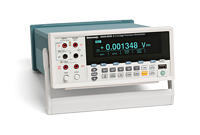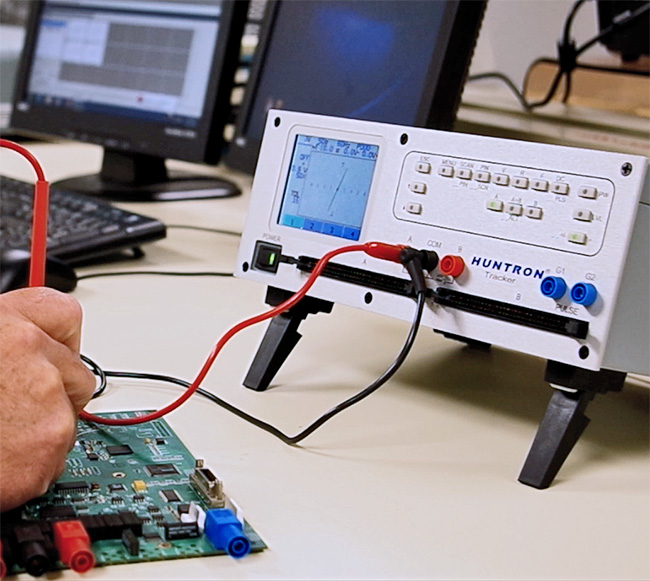Technology is rapidly changing our world. Electrical and electronic circuitry seem to encapsulate everything and continue to get more complex and smaller in size. This means PCBs are more complicated to repair. Manufacturing mistakes and component failures have become a fact of life. The repair of PCB assemblies can seem intimidating but understanding how to use the tools for repair can help find and fix problems quickly.
Testing with a Multimeter

A multimeter, also known as a volt-ohm meter, is an instrument used to measure electrical voltage, current (amperage), resistance, and other values. Multimeters come in analog and digital versions (DMM). They are useful for everything from simple tests, like measuring battery voltage, to detecting faults and complex diagnostics.
Multimeters are capable of many different readings, depending on the model. Basic testers can be used to check continuity, a simple test to verify a complete circuit. Modern multimeters are often digital due to their accuracy, durability and extra features. In a digital multimeter the signal under test is converted to a voltage and an amplifier with electronically controlled gain preconditions the signal.
DMMs are able to offer as standard the basic measurements that would typically include:
- Current (DC)
- Current (AC)
- Voltage (DC)
- Voltage (AC)
- Resistance
Test by Comparison
Troubleshooting is also much easier if a known-good board is available so that visual and signal comparisons can be made. Lack of a comparative board or documentation makes the challenge more daunting. This is where the Huntron Tracker proves to be an essential tool for troubleshooting.
Huntron Tracker

The Huntron Tracker is diagnostic tool to enhance your circuit board test capabilities. It is an important part of any electronic repair environment. Huntron Tracker power-off circuit board test uses analog signature analysis to detect and isolate faulty components. By comparing Tracker signatures from a working printed circuit board (PCB) to the signatures of a non-working PCB, you can troubleshoot down to the component level.
Power off Diagnostics
Analog Signature Analysis (also known as V/I testing) is a technique for fault finding on PCBs and is ideal when information about the PCB minimal. It can be used to perform powered-off troubleshooting of electronic components in PCB assemblies. It is considered a vital diagnostic tool for PCB repair tasks because it is suitable for dead boards which cannot safely be powered up. Applying a limited ac signal across two points on a circuit, current flow causes vertical deflection on the scope trace, while the applied voltage produces a horizontal deflection. This will create a characteristic V/I signature that can show if a component is good, bad or even borderline.
Since you are not powering the PCB on, there is no risk of further damage to the PCB while troubleshooting. Trackers can also tell you far more about a circuit than many power-on test instruments. They are useful for detecting intermittent and marginal component failures.
Tracker vs. DMM
Huntron Trackers have been proven to be the industry standard when it comes to off-power testing. Many engineers and technicians in the electronic repair and manufacturing industry have used DMM’s for ages. However, Trackers are extremely effective when troubleshooting electronic systems that cannot be turned on because of serious component failures.
The choice of the troubleshooting method can depend on the complexity of the circuit and the knowledge and experience of the person who performs the troubleshooting. The use of Huntron Tracker will help the engineers and technicians to identify the cause of failure quickly and accurately and subsequently increase the productivity of PCB repair.
To conclude, the Huntron Tracker provides a more precise tool to assist with power-off troubleshooting
- Use visual and signature comparisons to make the troubleshooting process much easier and faster.
- Test Circuit Boards that cannot be powered on.
- Schematics or documentation is not needed due to Analog Signature Analysis using Comparison troubleshooting.
- Reduce risk to the PCB from further damage if powered up
- Screen PCBs for catastrophic problems before adding power.

